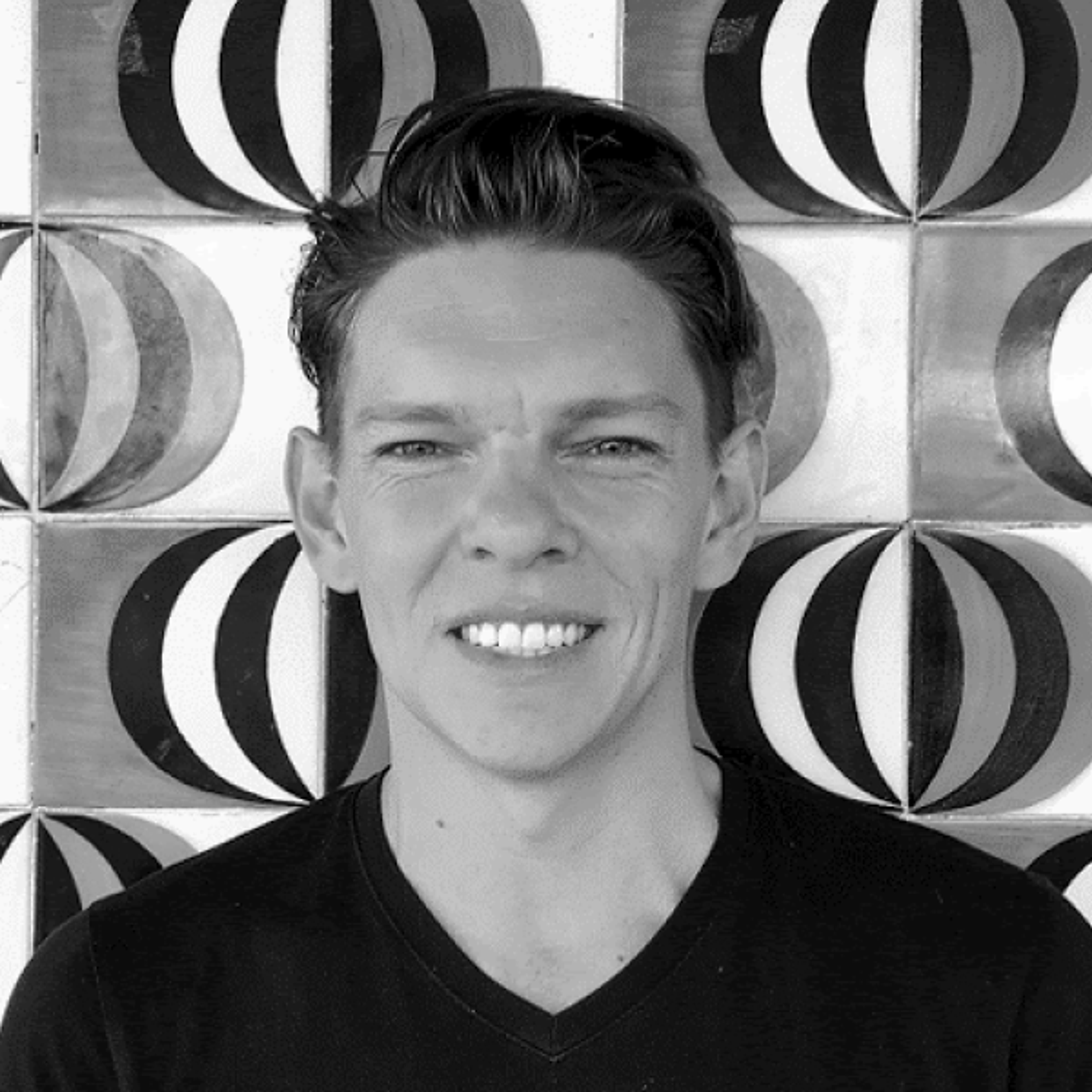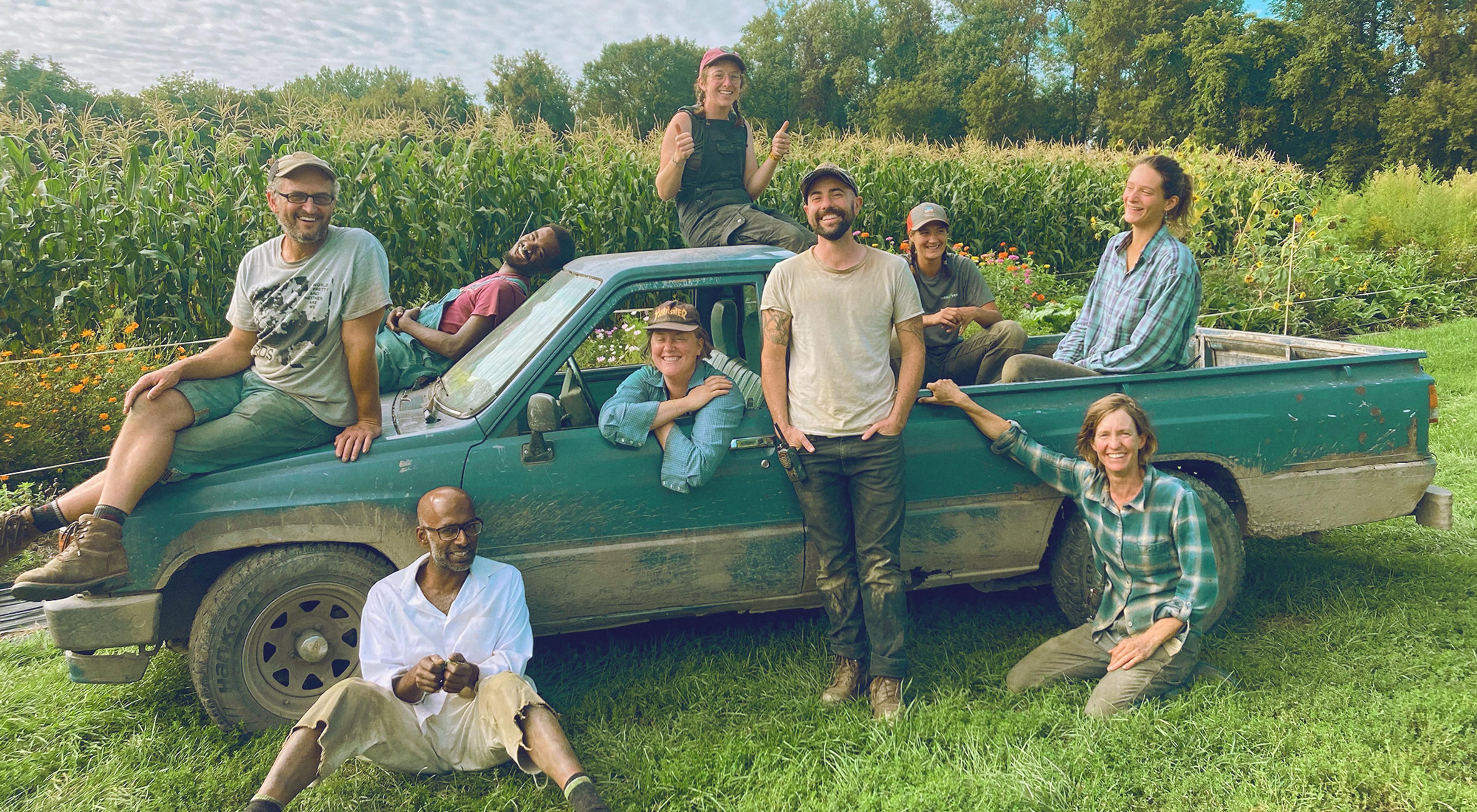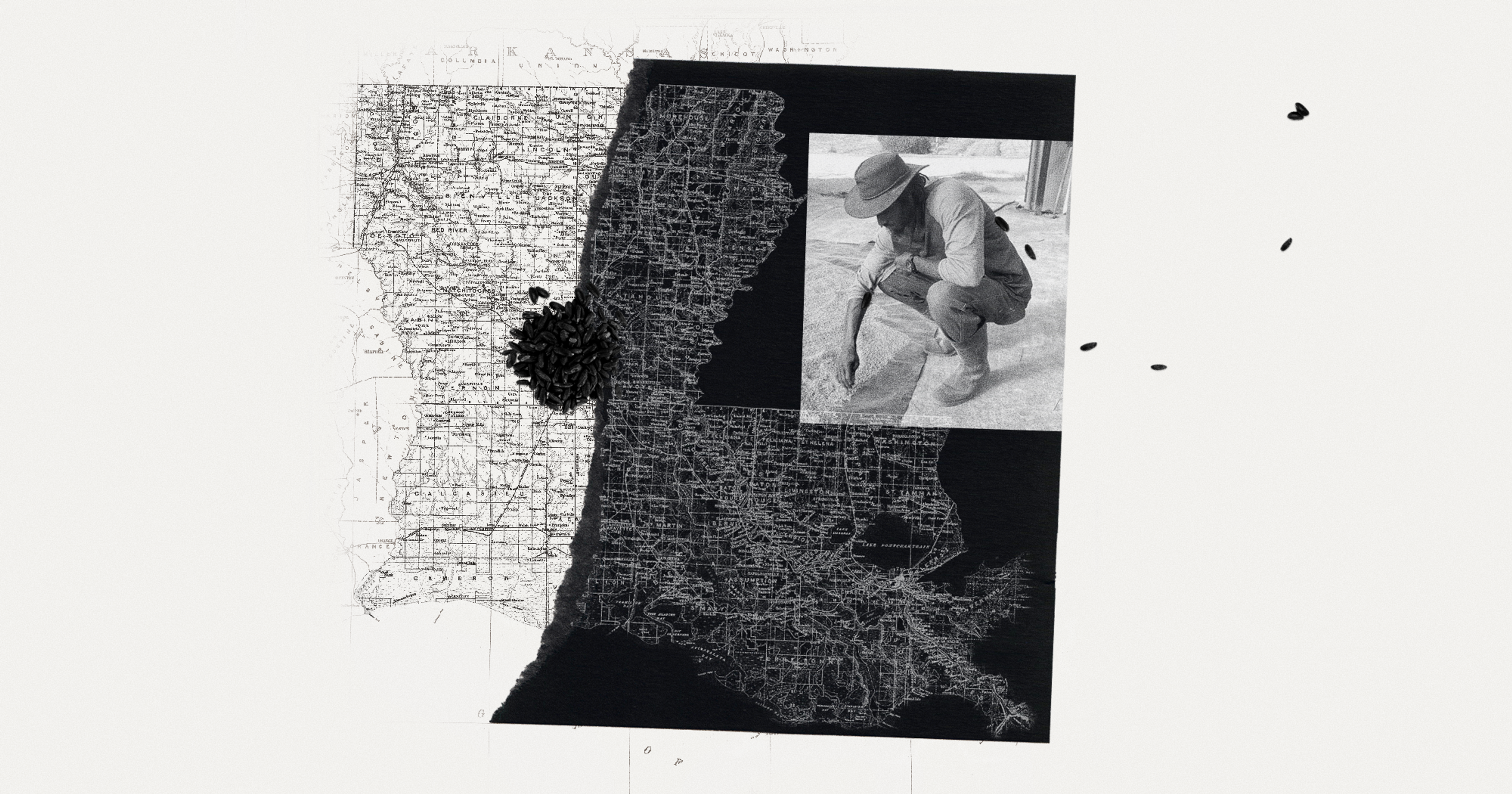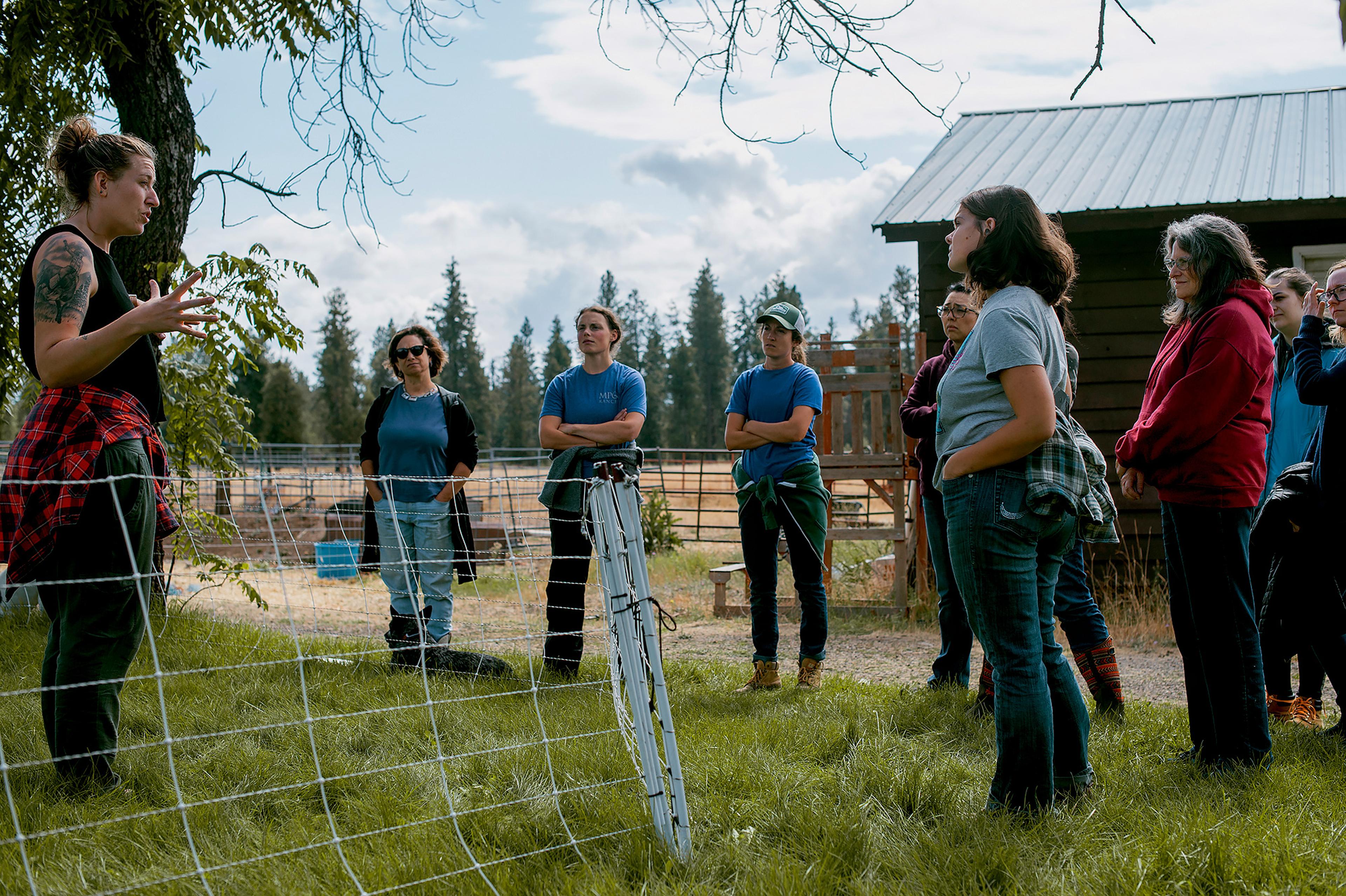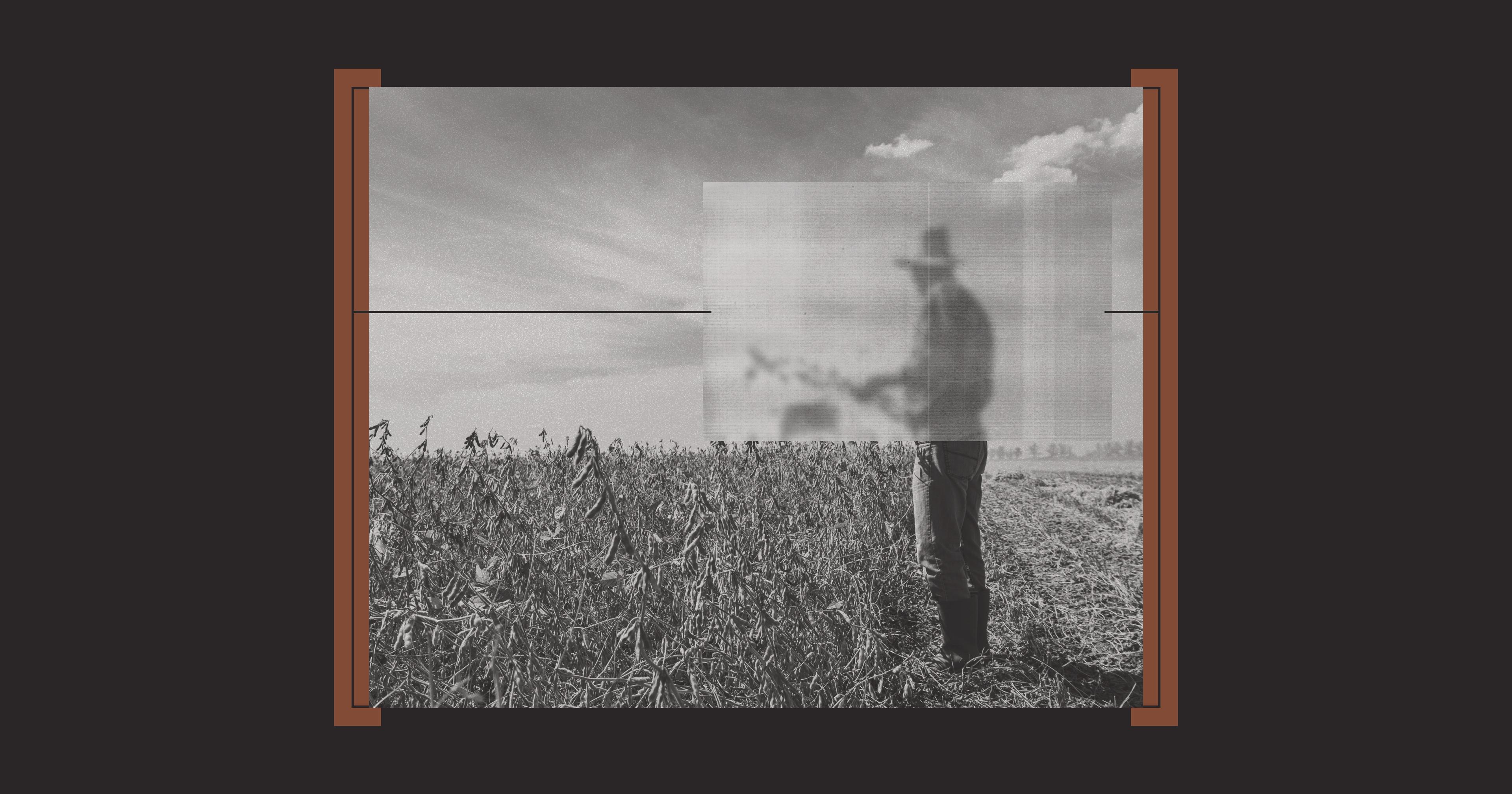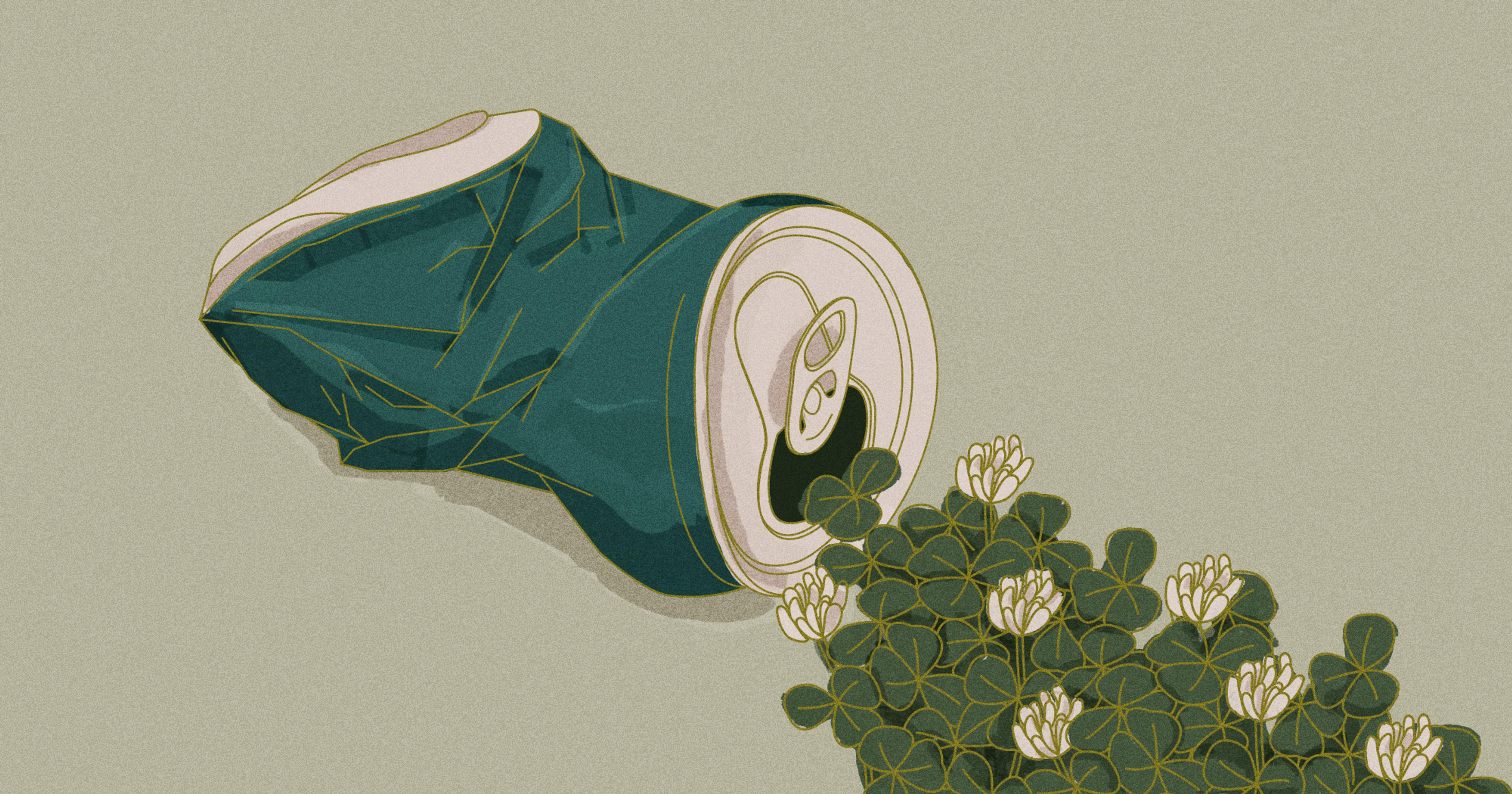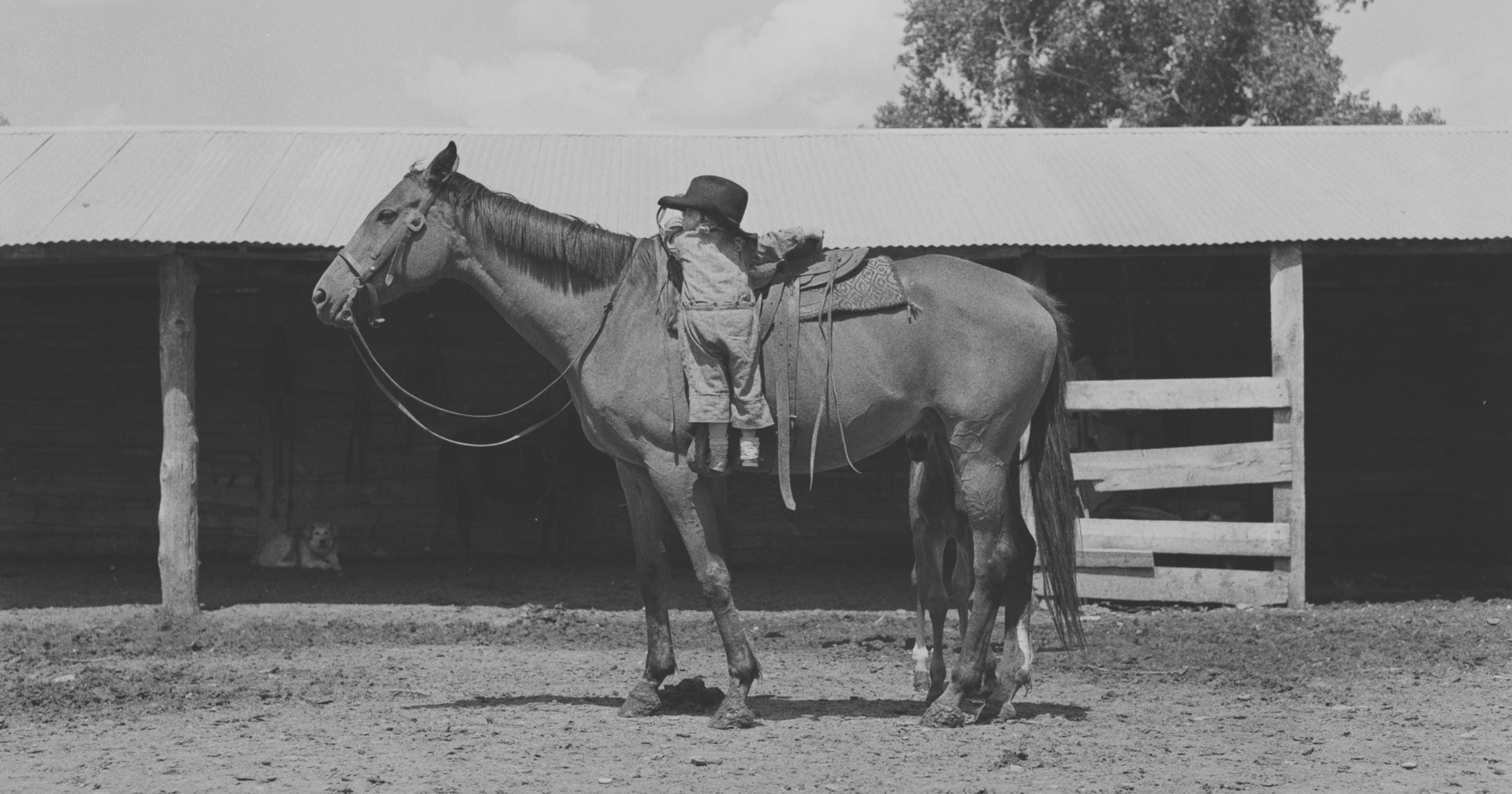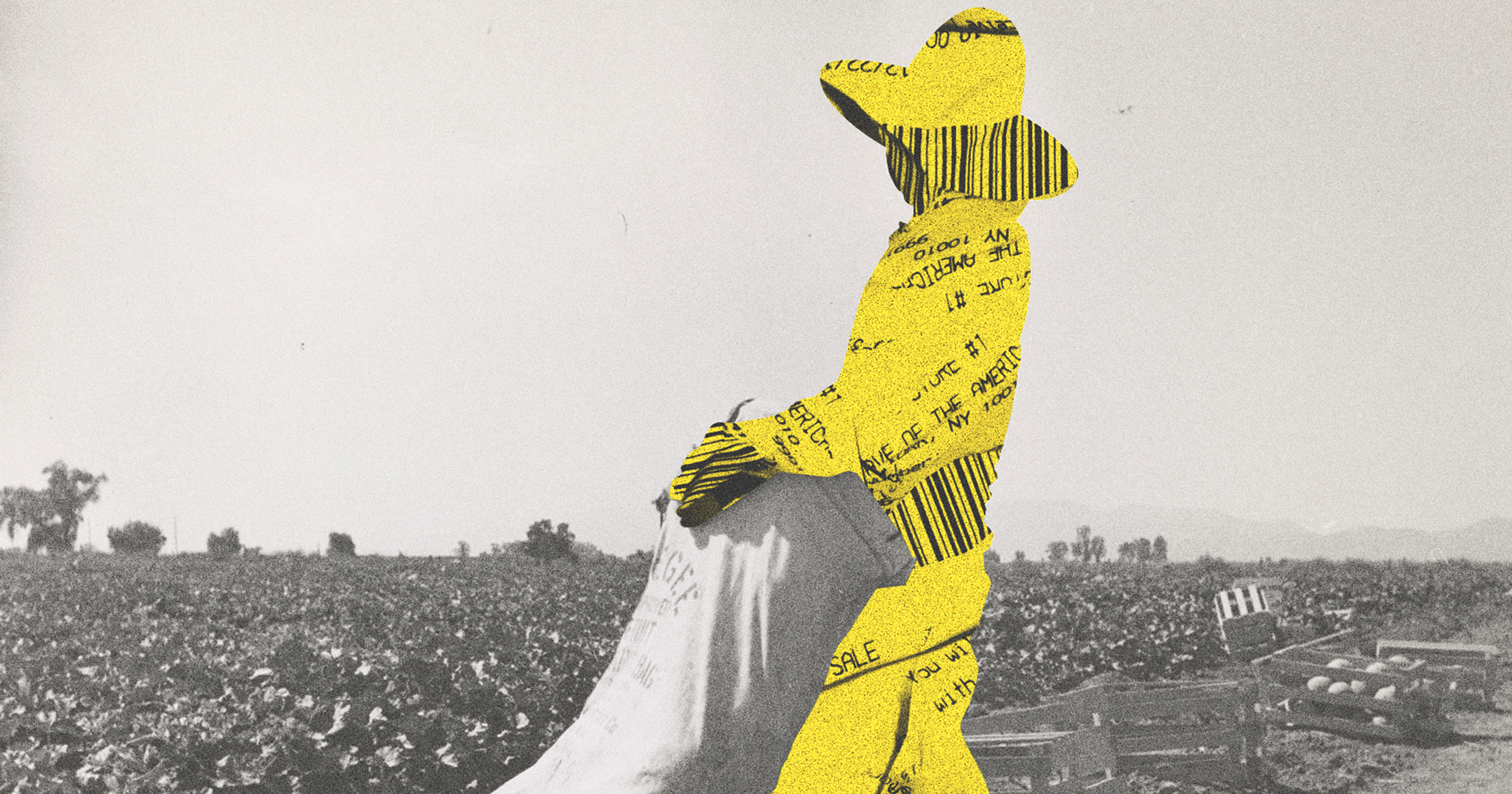Gay farmers have existed since the beginning of time, but the community is still under-resourced and lacking in representation.
Last summer, Jack Shultz and his husband went tractor shopping for their farm, Untraditional Fruits. When they arrived at the dealership the salesman was having a laugh with another customer, so the couple busied themselves examining a floor model they liked. The salesman shook hands with the other customer, gave him a free baseball cap, and said he’d be in touch soon.
The salesman then approached them, smiling: “Can I help you gentlemen?” Shultz shared the model that “we were looking to buy.” The salesman’s smile began to droop the moment Shultz said “we.” His brow furrowed a bit as he looked from Shultz to his husband. Nevertheless, he carried on with a general line of questioning about how many acres they would use the tractor on, how level the terrain, and how frequently they tilled.
Shultz mentioned an attachment they were also planning to buy, and as he gestured toward the floor model, the man’s stance went rigid. Maybe he noticed Shultz’s wedding ring, or maybe it was a certain fluidity in his wrist. The salesman shoved his hands deep in his pockets, keeping his arms tight to his sides. He looked again back and forth between the two of them, taking it all in, before demanding, “Are you two brothers?”
This is not the first time they’d received this question, but Shultz said he is always astonished by the mental gymnastics that go into drawing that conclusion. Shultz is nearly a foot taller than his husband. His husband is stocky where he is slight. Their skin tones are wildly different. Shultz has straight dark hair, while his husband’s is sandy and curly. There is nothing about their facial structures that hint at genetic similarities.
Shultz and his husband are both trans men. He thought to himself: “Is it safe, standing in a tractor dealership, to come out to a stranger? Is there a safe exit if things get ugly? Do we just lie for the sake of avoiding potential conflict?”
No one knows exactly how many queer farmers there are currently. The national agriculture census that happens every five years essentially tries to get an account of every single farm in the country, but they only ask about gender — are you male or are you female? And as stereotypes go, many assume that queer people only live in urban spaces. And while that may have a bit of truth, as the Movement Advancement Project shows in their report, Where We Call Home: LGBT People in Rural America, millions of queer people live in rural areas. And in that space, queer farmers have existed since the beginning of time.
This is some of the basis of the work that Michaela Hoffelmeyer, assistant professor of public engagement in agriculture at University of Wisconsin-Madison. “The farm, at least in its modern iteration, really took place in the early 1900s as an extension of the state’s needs — but what developed as part of that was women in the household and men on the farm,“ said Hoffelmayer. ”It sort of embedded heterosexuality as the only model of farming.” And as the census shows, farmers are mostly male and white.

Diggers’ Mirth farmers, Micah and Loach, harvesting cilantro during the 2023 season.
But for queer farmers, before they even decide to get into farming or buy land, they have to first consider the thorny question of whether they are going to be welcome — or safe. “Queer farmers want to be part of a community where they feel like they have a higher chance of being accepted or supported or where there are nearby places that they feel like the customers will support them or buy from them or not discriminate against them,” said Hoffelmeyer.
Hofflemeyer has published various papers and articles dealing with identity (including gender and race) and how they actively shape involvement in farming. With a group of colleagues, she also surveyed queer farmers on how sexuality influences all aspects of agriculture — from getting credit to training to access to land. “We’ve also done a paper on how there is a lower response rate when sexual orientation was added to the Census of Agriculture,” she said, adding that the paper was looking into USDA research in the area.
In the documentary film Out There, Jonah Mossberg looks at the experiences of queer farmers across America and poses some questions: What does queer farming mean? Is agriculture safe for queer people? How does queerness relate to food production? Mossberg ultimately shows us just how complicated (and expensive) farming is, for queer folk as it is for everyone. But without community support, it becomes immeasurably harder.
One of the big issues for queer farmers is exclusion from the spaces where hetero-farmers access community and information. Whether it’s ag trade shows or local grange halls, “It’s just so unwelcoming for queer folks at the moment,” said Shultz. He feels that some of these spaces even bear the threat of violence, far beyond just the standard microaggressions.
The USDA defines “historically underserved” farmers to be beginners, socially disadvantaged based on race, ones with limited resources, or military veterans. But there is no pot of funding tied to the LGBTQ community. There is even a page on the grant websites detailing that queer farmers have “distinct needs.” But how could they understand these specific needs if they are not even accurately measuring queer farmers, or directing funding toward them?
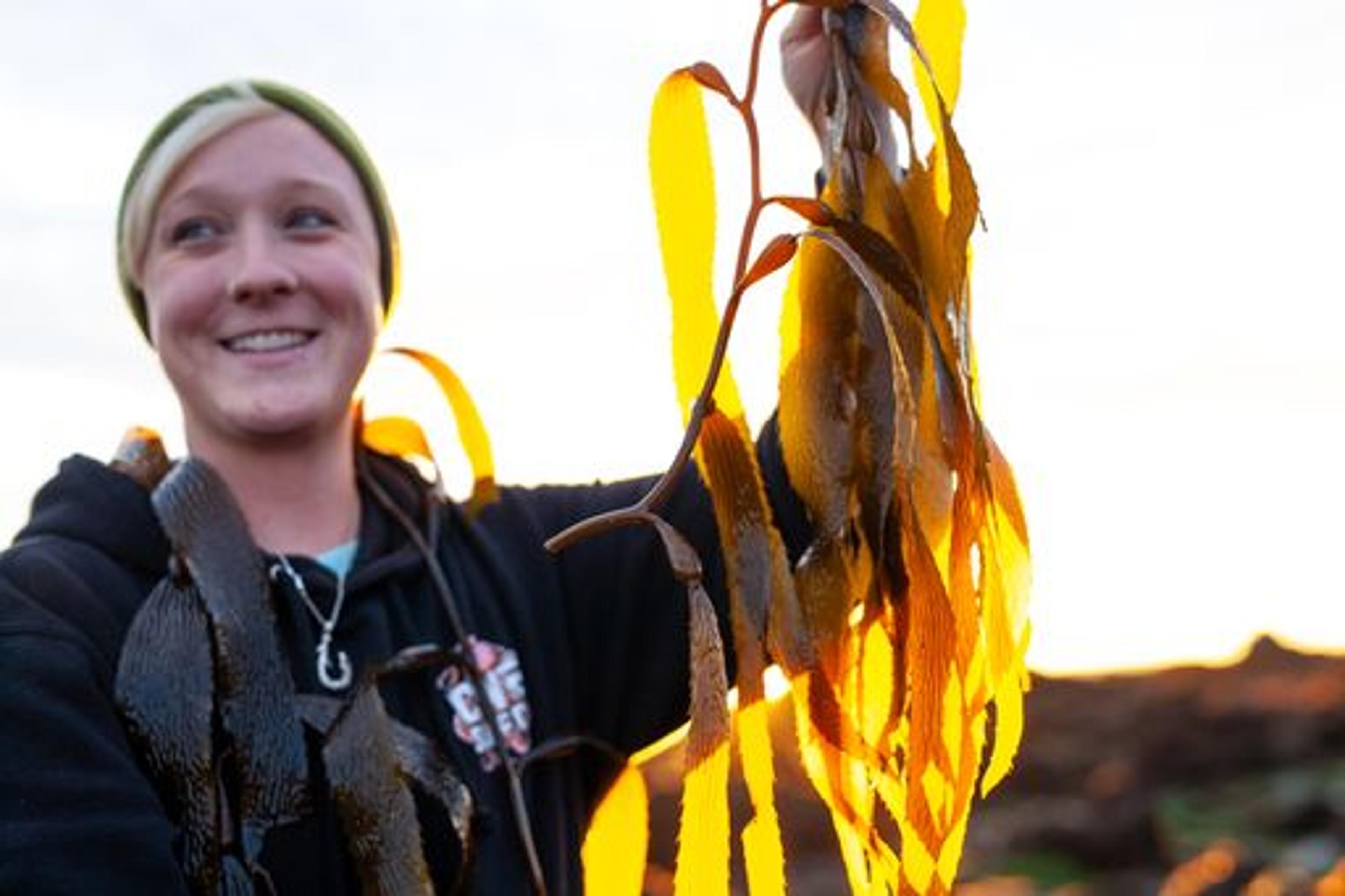
Photo courtesy of Kelpful·
Jules Marsh harvesting seaweed
C Green, a queer and non-binary farmer at Diggers’ Mirth Collective Farm in Vermont, said they are often the only Black or queer person in the room at agriculture conferences and farm trainings. And with this lack of representation two potential issues arise — negative stereotypes can creep in, and can make queer farmers feel invisible and isolated.
To C Green, the solution lies in “government support for more queer-specific farmer training programs, scholarships, ag programs in public schools, and conferences that include the queer community in a more welcoming way.” Green noted that agriculture is facing an aging problem so the industry certainly needs more young people. Therefore they might just have to take whomever is interested — including queer folks.
For Shultz, who started their farm last year, the queer community could bring positive change to agriculture writ large, like giving full-throated support to regenerative, sustainable farming practices: “Not to say that straight folks wouldn’t be thinking this way, but I think it’s very intertwined with our queerness to unravel the status quo for a greater good.”
Jules Marsh, a queer educator and co-founder of Kelpful (a mission-driven, cooperative seaweed company), is actively working on bringing awareness to queer aquaculture. “The only way to shift people’s awareness and perception is to make sure they are regularly engaging with queer farmers,” she said.
Along with her business partner, she has been in hundreds of pitch meetings, sharing very detailed business plans and financial models for what people perceive to be a very male-heavy profession (think “fishermen.”) “We’ve had people say to us they thought we were just ‘silly little girls with a silly seaweed’ business and that’s why we were not securing funding,” Marsh said. “It started to shape how we talk and present ourselves, we had to add a level of confidence and step into these rooms with such power, bringing as much masculine energy as I could muster up.”

Diggers’ Mirth Collective Farm crew lunch at the beginning of the 2024 season.
So what are the solutions? And how do we get to a more equitable place? For Shultz it is “to be able to call the USDA and not feel microaggressed, to ensure there are anti-discrimination laws that can certainly be enforced, and to have dedicated funding for queer farmers.”
All farmers want to feel part of this incredibly important industry that brings sustenance to the nation. But as Hoffelmeyer said, queer farming needs “normalizing” in all the spaces that farmers engage with the world — from the borrowing of machinery from other farmers in a neighborly way, to land grants from universities, to formal agricultural networks.
And the queer farmers across the country, representing queerness in all its multi-facets, are paving the way for others to join them. Farming as we now know, needs everyone and anyone, but queer people still have to navigate all of this as ‘others’ in the world. Thus they are having to create ways of existing that are simply harder.
But before we do anything else, we could start questioning the very essence of farming and how we have set up this entire system to support such a ‘straight’ way in the world. How do we include queer people in this — and how do we then present solutions to be more inclusive? Because that’s where we can find more equity for all.
And greater good means greater good for everyone, right? “Every time I see those ‘We Need Farmers’ or ‘Support Farmers’ bumper stickers and hats, I just want to rip them off and be like ‘You cannot say this unless you literally mean all farmers,‘” added Hoffelmeyer. “Whether it’s immigrant workers transitioning to farm owners, whether it’s women farm owners, or of course, queer farmers.”
